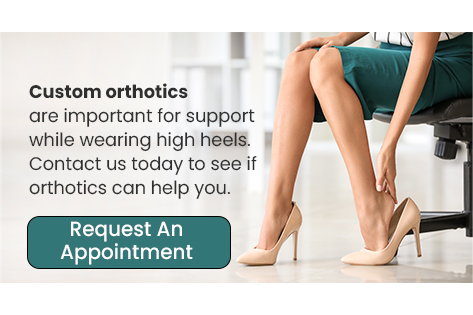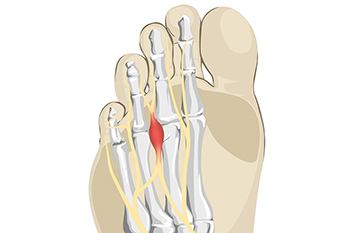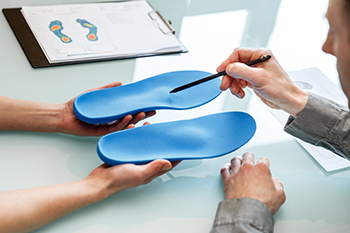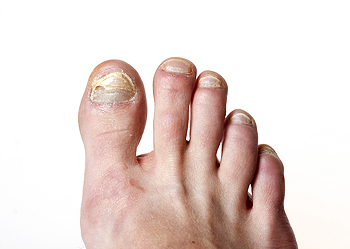Items filtered by date: March 2025
Choosing the Best Marathon Running Shoes

Selecting the right marathon running shoes is essential for performance and injury prevention. Comfort should be the top priority, as a well-fitting shoe reduces the risk of blisters and discomfort over long distances. Cushioned shoes provide excellent shock absorption, helping to reduce impact on the joints and muscles during extended runs. Runners who prefer a more responsive feel may benefit from carbon plate running shoes, which enhance propulsion and improve efficiency. Foot type, arch support, and running style should also be considered when choosing the best shoe. Trying on different styles and testing them with a short run can help determine the best fit. Investing in high-quality marathon shoes tailored to individual needs can improve endurance, reduce fatigue, and enhance overall performance on race day. Foot conditions can develop as a result of wearing the wrong running shoes. If this applies to you, it is suggested that you contact a podiatrist who can treat various foot ailments, and guide you on what the best type of running shoe is for you.
For more information about walking shoes versus running shoes, consult with Joseph M. LaCava, DPM from Arkansas. Our doctor can measure your feet to determine what your needs are and help you find an appropriate pair of footwear.
Foot Health: The Differences between Walking & Running Shoes
There are great ways to stay in shape: running and walking are two great exercises to a healthy lifestyle. It is important to know that running shoes and walking shoes are not interchangeable. There is a key difference on how the feet hit the ground when someone is running or walking. This is why one should be aware that a shoe is designed differently for each activity.
You may be asking yourself what the real differences are between walking and running shoes and the answers may shock you.
Differences
Walking doesn’t involve as much stress or impact on the feet as running does. However, this doesn’t mean that you should be any less prepared. When you’re walking, you land on your heels and have your foot roll forward. This rolling motion requires additional support to the feet.
Flexibility – Walking shoes are designed to have soft, flexible soles. This allows the walker to push off easily with each step.
If you have any questions, please feel free to contact our office located in Hot Springs, AR . We offer the newest diagnostic and treatment technologies for all your foot care needs.
Custom Orthotics for High Heels

Custom Orthotics help you not have to choose between style and comfort. With Custom Orthotics designed for high heels, you can walk with confidence, knowing your feet are supported. Custom Orthotics help distribute pressure evenly, reducing the risk of pain and discomfort. Whether it's a day at the office or a night on the town, make every step graceful and pain-free. Discover the magic of Custom Orthotics for high heels by calling our office today.
Treatment Options for Morton’s Neuroma

Morton's neuroma develops when tissue thickens around a nerve in the forefoot, commonly between the third and fourth toes. This condition often causes a burning sensation, tingling, or the feeling of stepping on a small object. Wearing tight shoes and high heels can increase pressure on the nerve and worsen the pain. A podiatrist can diagnose Morton’s neuroma by assessing symptoms and using digital imaging as needed. Treatment may involve changing footwear, using orthotics to relieve pressure, or receiving injections to reduce inflammation. If non-surgical methods do not provide relief, surgery may be considered to either remove the affected nerve or release surrounding tissue to reduce compression. Surgical recovery typically allows walking in a protective shoe soon after the procedure, with most people returning to regular footwear within a few weeks. If you are experiencing symptoms of Morton's neuroma, it is suggested that you schedule an appointment with a podiatrist for an exam, diagnosis, and treatment options, which may include surgery.
Morton’s neuroma is a very uncomfortable condition to live with. If you think you have Morton’s neuroma, contact Joseph M. LaCava, DPM of Arkansas. Our doctor will attend to all of your foot care needs and answer any of your related questions.
Morton’s Neuroma
Morton's neuroma is a painful foot condition that commonly affects the areas between the second and third or third and fourth toe, although other areas of the foot are also susceptible. Morton’s neuroma is caused by an inflamed nerve in the foot that is being squeezed and aggravated by surrounding bones.
What Increases the Chances of Having Morton’s Neuroma?
- Ill-fitting high heels or shoes that add pressure to the toe or foot
- Jogging, running or any sport that involves constant impact to the foot
- Flat feet, bunions, and any other foot deformities
Morton’s neuroma is a very treatable condition. Orthotics and shoe inserts can often be used to alleviate the pain on the forefront of the feet. In more severe cases, corticosteroids can also be prescribed. In order to figure out the best treatment for your neuroma, it’s recommended to seek the care of a podiatrist who can diagnose your condition and provide different treatment options.
If you have any questions, please feel free to contact our office located in Hot Springs, AR . We offer the newest diagnostic and treatment technologies for all your foot care needs.
Keep Your Feet Healthy So You Can Stay Active
Improving Employee Productivity With Orthotics

Implementing an insole program in the workplace can have a profound impact on both employee health and productivity. Many workers spend long hours on their feet, which can lead to foot pain, fatigue, and discomfort. By providing customized insoles, employers can help alleviate these issues, offering support and cushioning that promote proper alignment and reduce strain on the body. This leads to fewer injuries, less pain, and improved comfort throughout the workday. When employees feel better physically, their focus and efficiency increase, resulting in higher productivity. A well-designed insole program can also contribute to employee well-being, reducing the number of sick days and improving overall morale. Investing in foot health through insoles is a practical and effective way to enhance workplace performance while supporting long-term employee health. If you are an employer and you are interested in learning about an insole program that will benefit your employees, it is suggested that you consult a podiatrist.
If you are experiencing discomfort in your feet and would like to try custom orthotics, contact Joseph M. LaCava, DPM from Arkansas. Our doctor can provide the care you need to keep you pain-free and on your feet.
What Are Custom Orthotics?
Custom orthotics are inserts you can place into your shoes to help with a variety of foot problems such as flat feet or foot pain. Orthotics provide relief and comfort for minor foot and heel pain.
Over-the-Counter Inserts
Shoe inserts come in a wide variety and are used to treat foot pain, heel pain, and minor problems. For example, arch supports can be inserted into your shoes to help correct overarched or flat feet, while gel insoles are often used because they provide comfort and relief from foot and heel pain by alleviating pressure.
Prescription Orthotics
If over-the-counter inserts don’t work for you or if you have a more severe foot concern, it is possible to have your podiatrist prescribe custom orthotics. These high-quality, custom inserts are designed to treat problems such as abnormal motion, plantar fasciitis, and severe forms of heel pain. They can even be used to help patients suffering from diabetes by treating foot ulcers and painful calluses and are usually molded to your feet individually, which allows them to provide full support and comfort.
If you're experiencing minor to severe foot or heel pain, it’s recommended to speak with your podiatrist about the possibility of using custom orthotics or shoe inserts. A podiatrist can determine which type of custom orthotic or shoe insert is right for you and help you take the first steps toward being pain-free.
If you have any questions please contact our office located in Hot Springs, AR . We offer the newest diagnostic and treatment technologies for all your foot and ankle needs.
Managing Athlete’s Foot

Athlete’s foot is a fungal infection that affects the skin on your feet, particularly between the toes. It often causes itching, redness, peeling, and sometimes blisters. The condition can be painful and may create a burning or stinging sensation, especially when walking or wearing shoes. The fungus thrives in warm, moist environments, making public showers, locker rooms, and tight shoes common sources of infection. Athlete's foot is highly contagious and can spread through direct contact or by touching contaminated surfaces. It can remain contagious as long as the fungus is present, often lasting several weeks, if untreated. A podiatrist can diagnose athlete's foot through a physical examination and may take a sample of the skin to identify the fungus. Treatment typically involves antifungal creams, sprays, or oral medication. Keeping feet clean, dry, and well-ventilated can help prevent reinfection. If you have this condition, it is suggested that you schedule an appointment with a podiatrist for the right treatment.
Athlete’s foot is an inconvenient condition that can be easily reduced with the proper treatment. If you have any concerns about your feet and ankles, contact Joseph M. LaCava, DPM from Arkansas. Our doctor will treat your foot and ankle needs.
Athlete’s Foot: The Sole Story
Athlete's foot, also known as tinea pedis, can be an extremely contagious foot infection. It is commonly contracted in public changing areas and bathrooms, dormitory style living quarters, around locker rooms and public swimming pools, or anywhere your feet often come into contact with other people.
Solutions to Combat Athlete’s Foot
- Hydrate your feet by using lotion
- Exfoliate
- Buff off nails
- Use of anti-fungal products
- Examine your feet and visit your doctor if any suspicious blisters or cuts develop
Athlete’s foot can cause many irritating symptoms such as dry and flaking skin, itching, and redness. Some more severe symptoms can include bleeding and cracked skin, intense itching and burning, and even pain when walking. In the worst cases, Athlete’s foot can cause blistering as well. Speak to your podiatrist for a better understanding of the different causes of Athlete’s foot, as well as help in determining which treatment options are best for you.
If you have any questions please feel free to contact our office located in Hot Springs, AR . We offer the newest diagnostic and treatment technologies for all your foot and ankle needs.
Toenail Fungus or Tinea Unguium

Toenail fungus, medically known as tinea unguium, is a common fungal infection that affects the nails, causing them to become discolored, thickened, and brittle. This condition often begins as a small white or yellow spot under the tip of the nail, eventually spreading deeper into the nail and surrounding skin. The infection thrives in warm, moist environments, making public showers, areas around swimming pools, and sweaty shoes ideal for fungal growth. Risk factors include a weakened immune system, diabetes, poor circulation, and a history of athlete's foot. People with toenail fungus may experience discomfort or pain, especially when wearing shoes. Early detection and treatment are important to prevent the infection from worsening and affecting the quality of life. If you have any of the above symptoms, it is suggested that you consult a podiatrist who can provide immediate treatment.
For more information about treatment, contact Joseph M. LaCava, DPM of Arkansas. Our doctor can provide the care you need to keep you pain-free and on your feet.
Toenail Fungus Treatment
Toenail fungus is a condition that affects many people and can be especially hard to get rid of. Fortunately, there are several methods to go about treating and avoiding it.
Antifungals & Deterrence
Oral antifungal medicine has been shown to be effective in many cases. It is important to consult with a podiatrist to determine the proper regiment for you, or potentially explore other options.
Applying foot powder on the feet and shoes helps keep the feet free of moisture and sweat.
Sandals or open toed shoes – Wearing these will allow air movement and help keep feet dry. They also expose your feet to light, which fungus cannot tolerate. Socks with moisture wicking material also help as well.
If you have any questions please feel free to contact our office located in Hot Springs, AR . We offer the newest diagnostic tools and technology to treat your foot and ankle needs.

